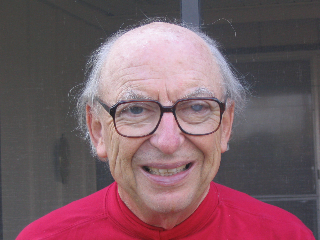James R. Arnold facts for kids
Quick facts for kids
James R. Arnold
|
|
|---|---|
 |
|
| Born | May 5, 1923 |
| Died | January 6, 2012 (aged 88) La Jolla, California, United States
|
| Nationality | American |
| Other names | Jim Arnold |
| Alma mater | Ph.D., Princeton University, 1946 |
| Known for |
|
| Spouse(s) | Louise C. Arnold |
| Awards |
|
| Scientific career | |
| Fields | Cosmochemistry |
| Institutions | |
James Richard Arnold (May 5, 1923 – January 6, 2012) was a very important scientist. He was a professor of chemistry and a leader in studying space and planets. He worked at the University of California at San Diego (UCSD). He helped start the study of how chemicals are found in space.
Contents
Early Life and Learning
School Days at Princeton
James Arnold started college at Princeton University when he was only 16 years old. He earned his highest degree, a doctorate, at age 23 in 1946. His work for this degree was part of the secret Manhattan Project. This project created the first atomic bombs.
Helping with Carbon Dating
After college, Arnold worked with another scientist, Willard Libby. They helped create a way to find the age of old things using something called Carbon-14 dating. They used this method on ancient items from Egypt. For this important work, Libby won the Nobel Prize in Chemistry in 1960.
His Amazing Career
Studying Space Rocks
After his studies, James Arnold went back to Princeton University. He started to study how cosmic rays could help measure the age of rocks. Cosmic rays are tiny, powerful particles from space. He also began to study materials from outside Earth. Two scientists, Masatake Honda and Devendra Lal, joined his team. They worked together for many years.
Moving to California
In 1957, a scientist named Roger Revelle was planning a new university. This was the University of California, San Diego (UCSD). He asked James Arnold to be one of the first teachers there. Another famous scientist, Harold C. Urey, also joined. This convinced Arnold to move to California in 1958. He became the first head of the Chemistry Department at UCSD.
Working with NASA
James Arnold was a special helper for NASA for many years. He helped decide what science NASA should focus on. He played a big part in setting up the Lunar Receiving Laboratory. This lab was where scientists studied the moon rocks brought back by the Apollo program. He was one of the "Four Horsemen" who helped with this important work.
Research on the Moon
Arnold did his own research on moon rocks and cosmic rays. His team, known as SHRELLDALFF, wrote important papers about their findings. He kept studying the moon for a long time. He measured how cosmic rays hit the moon's surface. This helped scientists understand how much energy the Sun has given off over millions of years. NASA gave him a special award in 1970 for his scientific achievements.
Starting CalSpace
In 1979, the governor of California, Jerry Brown, asked Arnold for help. Arnold then started the California Space Institute (CalSpace) for the University of California. He was its first director for ten years.
An Asteroid Named After Him
In 1980, two scientists named E. F. Helin and Gene Shoemaker discovered an asteroid. They named it "Jimarnold" (Asteroid 2143) after James Arnold. They did this because of his work on computer models. These models helped predict how meteorites travel in space.
Important Groups
James Arnold was a member of several important science groups. These included the U.S. National Academy of Sciences. He was also a member of the American Academy of Arts and Sciences.
Personal Life
James Arnold was known for wearing fun, "wild shirts." This was a change from the formal clothes people wore at Princeton. He was married to Louise Arnold for 60 years. They had three sons named Bob, Ted, and Ken.

